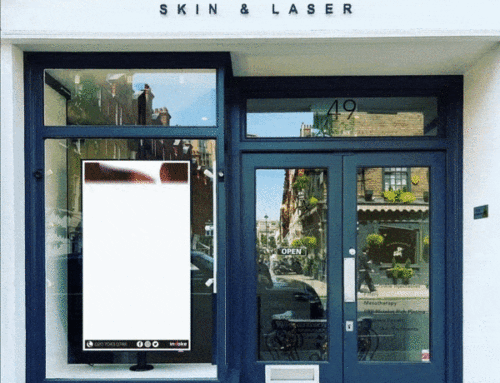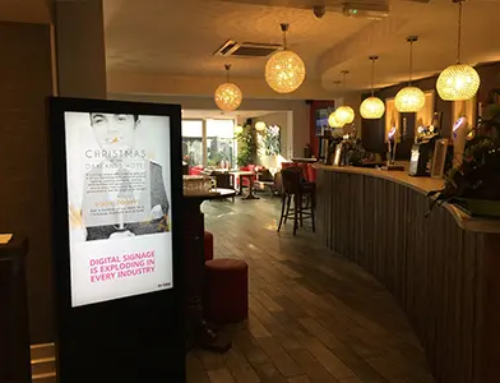Despite 76 percent of purchase decisions (and 60 percent of brand ‘switch’ decisions) being made impulsively at the shelf-edge, the power of the shelf-edge as a premium marketing tool can sometimes be underestimated.
Traditionally, static shelf-edges with paper-printed labels have been used only to fulfill one purpose – to inform customers of the price of goods.
But, digital technology is rapidly innovating every aspect of the retail industry, and in doing so, the gap between online and offline shopping is becoming narrower. Fresh technologies such as electronic shelf-edge displays can be used not only to provide vital information, but also to provide a valuable, personalized and truly seamless experiences for shoppers.
Currently, supermarkets in particular stand to gain the most value from taking the digital plunge. Large grocers can easily spend huge amounts of time and resources manually changing anywhere between 5 and 10 million labels a week – a task that can be practically eradicated once the switch has been made to electronic displays. This is just one example of how digital shelf-edge technology is on the cusp of a revolutionary takeover from its printed paper counterpart. Reduced man-power aside, here are a couple more reasons why retailers from all sectors should consider making the digital transition:
Dynamic pricing
- Retailers consider two of the top strategic business challenges to be increased price sensitivity among consumers (57 percent) and increased promotional intensity among competitors (41 percent).
- 55 percent of retailers recognize the importance of responding quickly to competitors’ pricing changes
- 44 percent acknowledge that dynamic pricing enables retailers to alter product pricing on the fly, based on market demands and competitors’ strategies.
Central control
Digital shelf-edge technology affords retailers the opportunity to be more proactive as opposed to reactive in their pricing strategies. A more nimble approach to pricing enables retailers to experiment with different campaigns/pricing strategies that have been devised according to previously gathered internal data, and also allows them to capitalize on peak times of day. This could include running a 2-4-1 offer (or ‘end of day markdowns’) on perishable items in the evening, or running a daily ‘deal’ between 5 and 7 p.m. around the most popular products from the after-work rush. The ability to dynamically and quickly update prices from one centralized location allows retailers to experiment without impacting on their staff labor or operational costs.
The ability to dynamically control pricing across an entire portfolio of stores from one single location also means that managers can react to competitive pricing at local store level, as well as ensuring that all prices are consistent regardless of the store’s location. Faster, more data-driven decisions can also help to improve margin management and drive the level of up-sells and cross-sells throughout the store.
In-store messaging
With an innovative technology comes brand new ways to target and deliver highly personalized, valuable experiences to demanding shoppers. Retailers are always on the look-out for exciting ways to engage their customers – and tailored content at the precise moment of need doesn’t get much more engaging!
Price checking
62 percent of consumers say that they compare prices online before committing to a purchase, and 84 percent will use their mobile devices to do so whilst shopping in-store.
By integrating shelf-edge technology with software that monitors competitor prices, brands can dynamically update their prices in real-time. Using digital content, retailers can inform customers that live price comparisons have already been conducted, providing reassurance that they won’t get a better price elsewhere. This results in a shortened buying cycle, and can also help to combat the consumer trend for ‘showrooming.’
Product reviews
Because it’s not just about the price:
- 92 percent of consumers now read online reviews
- More than 88 percent of online shoppers incorporate reviews into their purchase decision.
- 64 percent of consumers read online reviews before purchasing technology items
- Reviews produce an average of 18 percent uplift in sales
- Over half of young people aged 18-34 say they trust online reviews more than the opinions of friends and family.
Product reviews are an intrinsic part of the online shopping experience. Consumers trust genuine consumer reviews more than anything else – placing just as much faith in those written by fellow customers as recommendations from friends and family. By using digital shelf-edge screens to display real customer reviews of products, retailers can blend together the very best elements of online and in-store shopping into one ultimate omnichannel experience.
Product recommendations
Retailers can use digital shelf-edge displays to deploy captivating animated content highlighting and recommending complimentary products, such as specific makeup brushes for makeup palettes, or the most suitable paste for wallpaper rolls. Alongside product recommendations, interactive content revealing hint and tips on getting the best out of the chosen product can also help to create a customer experience that is engaging and has real value.
Beacon integration
Digital displays integrated with beacon technology can offer highly personalised, fine-tuned experiences for customers. The instant delivery of exclusive offers or promotional deals that have been structured according to data previously collected about a specific customer can help to further influence the buying decision and increase the chances of securing a sale.
Future-proofing the store
Looking ahead, electronic shelf-edge is also an inherently greener and more eco-friendly solution than printed paper labels. For businesses that are seeking to reduce their carbon footprint, shelf-edge technology helps to reduce the level of waste associated with ink, toner and general printing costs.
Furthermore, in an environment that only continues to grow more cut-throat, retailers need to invest in future-proofing their physical stores to help provide the seamless shopping experience that consumers crave. Pioneering technology such as digital shelf-edge can help retailers achieve the ultimate balance between online and offline shopping, thereby reinvigorating the physical store and encouraging customers to once again view the brick-and-mortar store as the ultimate destination that successfully caters for their every shopping need.



